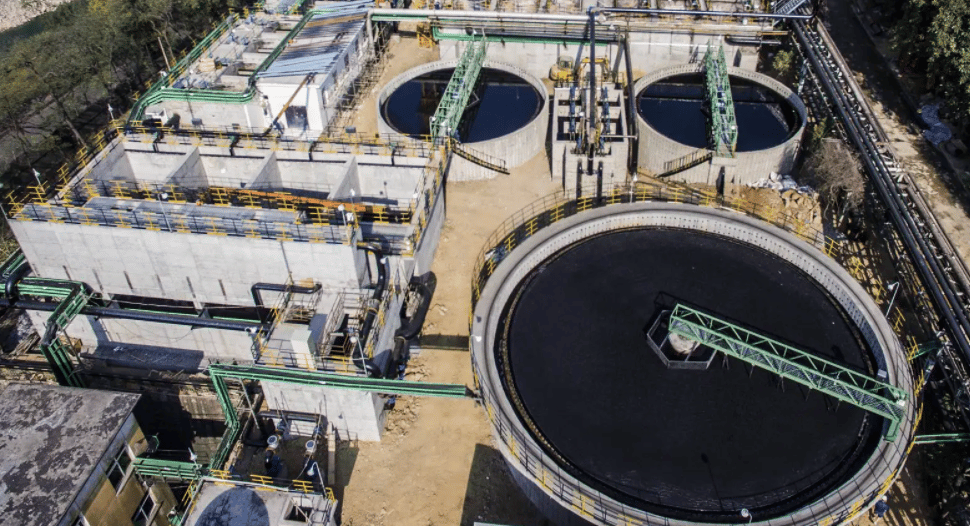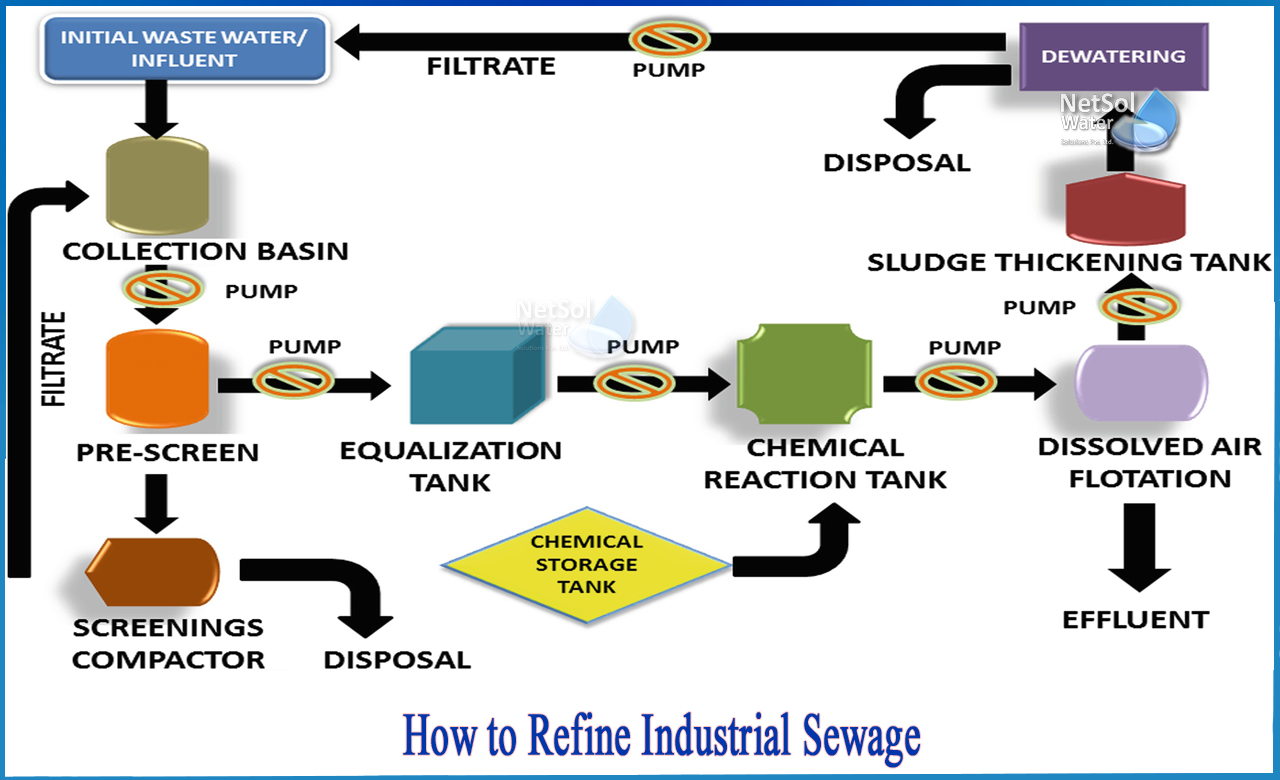Industrial Waste Water Treatment-- Cutting-Edge Technologies for Water Purification
Industrial Waste Water Treatment-- Cutting-Edge Technologies for Water Purification
Blog Article
Innovations and Advancements in Hazardous Waste Water Treatment Technologies
The landscape of industrial wastewater treatment is going through a transformative shift, driven by innovations that enhance both effectiveness and sustainability. As regulative standards develop, the integration of AI and equipment discovering into wastewater management systems guarantees to enhance procedures and guarantee compliance.
Overview of Waste Water Therapy Technologies
Wastewater treatment innovations include a range of methods created to eliminate pollutants from commercial effluents prior to their launch into the atmosphere. These modern technologies are vital for preserving eco-friendly balance and ensuring compliance with ecological policies. The primary classifications of wastewater treatment consist of physical, chemical, and biological approaches, each offering distinctive objectives based on the nature of the contaminants existing.

Biological treatment methods utilize microorganisms to deteriorate raw material, making them particularly effective for organic-rich effluents. Techniques like turned on sludge and biofilm activators harness the all-natural degradation capacities of bacteria, leading to significant reductions in biochemical oxygen demand (BOD)
Advanced Purification Methods
Advanced filtering strategies stand for an important evolution in the realm of commercial wastewater therapy, boosting the performance of pollutant removal processes. Industrial Waste Water Treatment. These approaches incorporate a range of innovations, including microfiltration, ultrafiltration, nanofiltration, and reverse osmosis, which supply consecutive barriers for various bit dimensions and chemical structures
Microfiltration and ultrafiltration use membrane systems to remove put on hold solids, germs, and bigger organic particles, improving the top quality of effluent before more therapy. Nanofiltration bridges the gap in between ultrafiltration and reverse osmosis, efficiently removing divalent ions and organic substances, therefore reducing the load on downstream procedures.
Reverse osmosis supplies the greatest degree of filtration by permitting just water and tiny particles to pass via its semi-permeable membrane layers, making it perfect for recovering premium water from commercial effluents. Current advancements in membrane technology, including the development of even more fouling-resistant and resilient materials, have substantially boosted functional effectiveness and reduced prices.
Integrating these innovative purification strategies not only improves the overall therapy process however also adds to sustainability efforts by making it possible for water reuse and resource recovery in commercial settings. (Industrial Waste Water Treatment)
Biological Treatment Innovations

In addition, the growth of crafted biological systems, such as membrane bioreactors (MBRs), combines biological treatment with innovative membrane filtration. This combination enables greater effluent top quality and decreased impact, making it ideal for space-constrained commercial centers. Developments in genetically crafted microbes have actually likewise emerged, boosting the biodegradation of details impurities, such as pharmaceuticals and hefty steels, that are typically testing to remove.
Furthermore, the execution of bioaugmentation methods, where advantageous microbes are presented to enhance the existing biological therapy processes, has actually revealed promising cause improving treatment efficiency. These innovations collectively indicate a pattern towards more effective and lasting biological therapy approaches that can adapt to the evolving intricacies of industrial wastewater streams. As sectors continue to prioritize ecological compliance, these biological developments will play a vital role in wastewater monitoring.

Resource Recovery Techniques
In industrial settings, the assimilation of resource recuperation methods has become significantly crucial for enhancing sustainability and reducing waste. These approaches focus on removing valuable products and energy from wastewater streams, thereby changing prospective toxins right into recyclable sources.
One popular method is nutrient recuperation, where nitrogen and phosphorus, often present in excess in wastewater, are caught and transformed right into fertilizers. This not only lowers ecological impacts yet likewise supplies a round economic climate remedy for agricultural applications. In addition, modern technologies such as anaerobic food digestion permit the conversion of natural waste right into biogas, a renewable resource source that can offset nonrenewable fuel source use in commercial operations.
Moreover, advanced filtering and membrane modern technologies assist in the healing of industrial spin-offs such as metals and salts. These recovered materials can be rehabilitated right into manufacturing processes, lowering the need for virgin resources.
Future Patterns in Drainage Monitoring
As markets progressively prioritize sustainability, the future of wastewater management is established to view publisher site go through considerable transformations. Technological developments, such as expert system and artificial intelligence, will certainly make it possible for more efficient monitoring and management of wastewater systems. These modern technologies can anticipate maintenance needs, optimize treatment procedures, and enhance decision-making, ultimately reducing functional expenses and ecological impact.
Moreover, the combination of round economy concepts will certainly play an important duty in wastewater administration. Industries are anticipated to shift towards systems that not just treat wastewater but likewise recoup valuable resources, such as nutrients, water, and energy. This shift will certainly reduce waste and advertise the reuse of products, straightening with global sustainability goals.
Emerging treatment methods, such as membrane bioreactors and advanced oxidation processes, will further enhance the effectiveness of wastewater treatment, enabling for higher high quality effluents suitable for reuse. Additionally, regulatory structures are most likely to evolve, emphasizing more stringent requirements for wastewater discharge and encouraging industries to take on cutting-edge therapy options.
Final Thought
In conclusion, the advancement of commercial wastewater treatment modern technologies demonstrates a significant shift in the direction of enhanced effectiveness and sustainability. Advancements in advanced purification methods, organic therapies, and resource recuperation methods highlight the sector's commitment to ecological stewardship. The integration of artificial intelligence and artificial intelligence additionally optimizes these processes, making certain regulatory compliance and promoting a round economic situation. Continued innovations in these locations will certainly play an important function fit the future of wastewater administration and shielding vital water resources.
The landscape of industrial wastewater therapy is undertaking a transformative change, driven by technologies that improve both efficiency and sustainability.Wastewater therapy modern technologies include helpful site a variety of methods designed Going Here to get rid of contaminants from commercial effluents before their launch into the setting.Taking advantage of the power of biological procedures has actually led to significant innovations in the treatment of commercial wastewater.Furthermore, the implementation of bioaugmentation methods, where advantageous microorganisms are presented to enhance the existing biological therapy processes, has actually shown promising results in enhancing treatment performance. These advancements jointly symbolize a trend towards more efficient and lasting organic therapy techniques that can adapt to the progressing intricacies of commercial wastewater streams.
Report this page